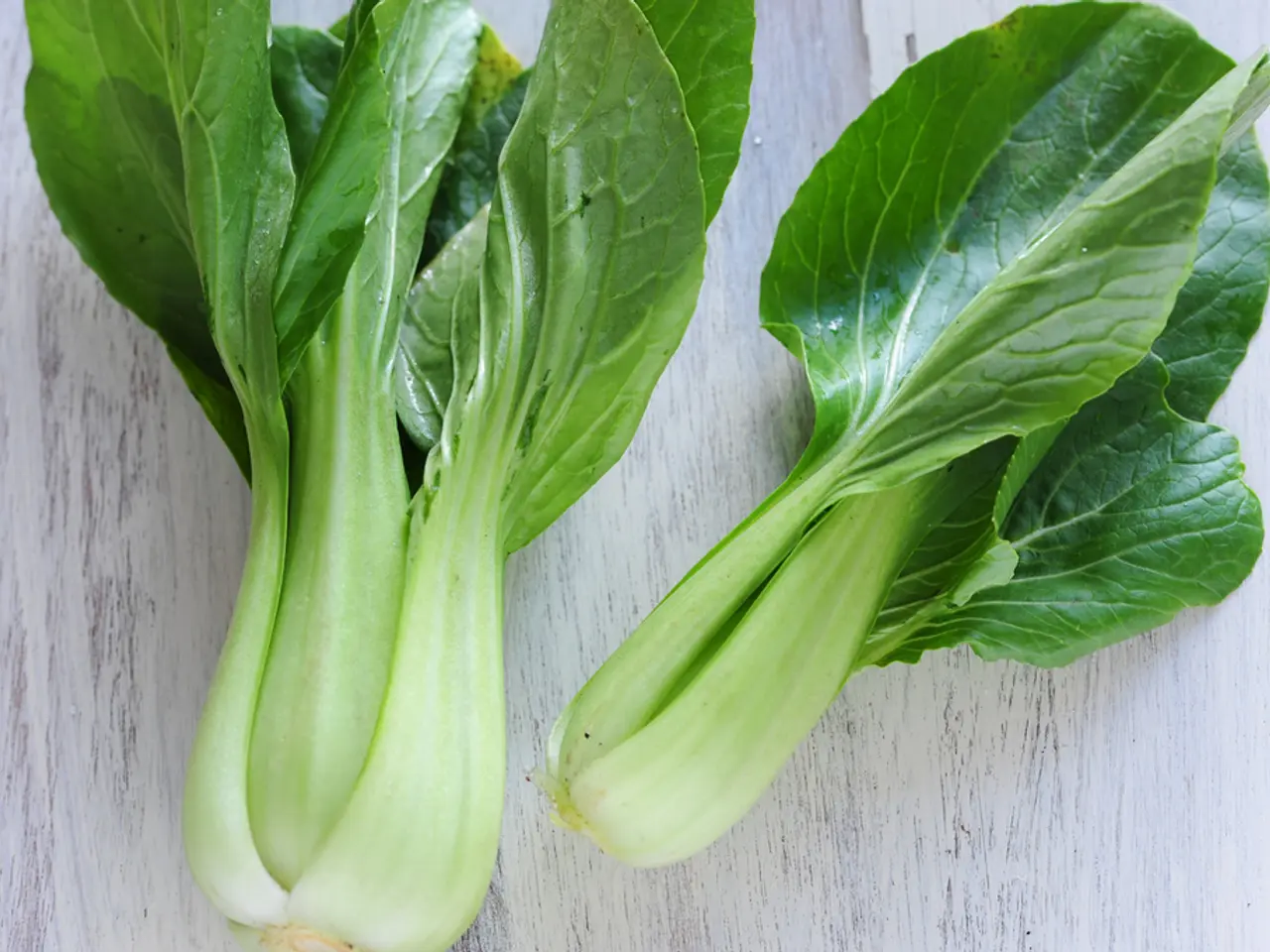Top winter-hardy vegetables to cultivate during the cold season
Growing and Protecting Winter Vegetables: A Guide
Winter gardening offers a unique opportunity to enjoy fresh, homegrown produce even during the colder months. Many vegetables, such as beets, broccoli, cabbage, carrots, kale, spinach, collards, Swiss chard, leeks, garlic, onions, peas, radishes, arugula, and mustard greens, are known for their cold-hardiness and often improve in flavor after exposure to light frost [1][2][3].
To ensure the success of your winter vegetable garden, it's essential to employ protective measures against frost. Here are some effective strategies:
- Mulching: Applying a heavy layer of mulch around plants helps keep the soil from freezing and protects roots [1][2].
- Row covers or insulating fabric: Using frost cloths, floating row covers, or garden fleece can trap heat close to the plants, especially during cold nights or early frosts [1][2].
- Cold frames or cloches: These structures provide a mini-greenhouse effect, shielding plants from frost and extending the growing season [1][2].
- Covering more tender vegetables: Some crops like cauliflower and certain lettuces may need extra covering when frost is predicted [1][2].
- Plant selection: Choosing varieties known for extreme cold tolerance, such as ‘Piracicaba’ broccoli, ‘Deadon’ cabbage, or specific kale cultivars, can help ensure survival in very low temperatures [2][3].
Hardy vegetables like garlic overwinter well even in freezing conditions without additional protection, especially hardneck varieties [3]. Others, such as collards, some cabbages, and kale, can survive down to temperatures as low as 10°F (-12°C) or lower if adequately protected, sometimes requiring coverings at their most vulnerable times [2].
Leafy crops like chard, parsley, and rocket can overwinter with some protection. Brussels sprouts 'Brodie F1' is a variety that bears super sweet buttons and is easy to harvest. 'Bright Lights' chard, with stems in red, yellow, and white, is an ornamental variety that also provides edible leaves.
Purple sprouting broccoli overwinters and crops very early in spring. 'Purple Rain', a British bred variety, doesn't need a spell of cold weather to produce tasty sprouts. For more tender crops, fleece or cloches may be necessary during winter.
Turnip 'Golden Ball' is an ideal winter root vegetable for roasting and grilling. Vegetables like kale, Brussels sprouts, beetroot, and turnips thrive in cold conditions and can be harvested throughout winter or overwintered for an early spring harvest. A greenhouse or cold frame can protect more tender plants from frost during winter vegetable growing.
In summary, growing a mix of cold-hardy vegetable varieties combined with protective measures such as mulching and frost covers is the best approach to successfully cultivate winter vegetables and protect them from frost damage.
[1] RHS (2021) Growing Winter Vegetables. [Online] Available at: https://www.rhs.org.uk/advice/profile?pid=352
[2] Garden Organic (2021) Winter Vegetables. [Online] Available at: https://www.gardenorganic.org.uk/advice/growing-vegetables/growing-vegetables-a-z/winter-vegetables
[3] BBC Gardeners' World (2021) Winter Vegetables. [Online] Available at: https://www.bbc.co.uk/gardening/howto/vegetables/winter_vegetables
Adopting a home-and-garden lifestyle, specifically focusing on gardening, allows you to cultivate a variety of winter vegetables like beets, kale, spinach, and collards, which thrive and often improve in flavor after exposure to light frost. To secure a bountiful winter vegetable garden, employ protective methods such as mulching, using row covers, cold frames, or cloches, and covering tender vegetables during frost.





